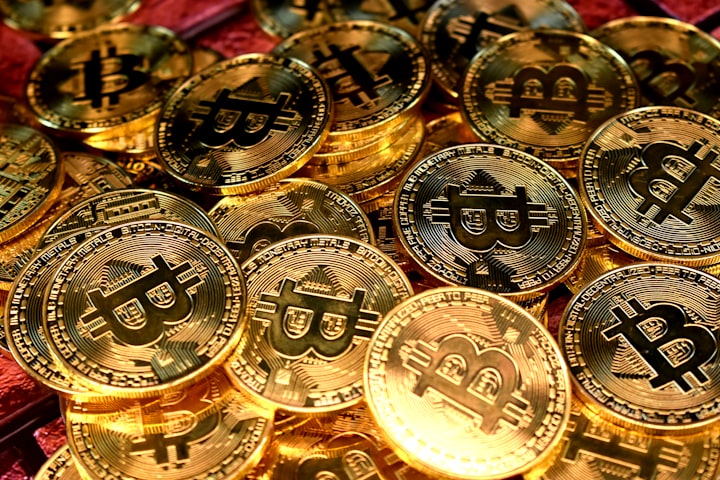A Look at the Future of Bitcoin Amidst the Upcoming Recession
Let’s forget about all the wild predictions and look at real economic factors on a global level that will affect the price of Bitcoin in the coming months and years

Bitcoin recently had a wild correction of -50%. While chances are high that the bottom is not yet in, let’s have a proper look at what our current economic situation means for the cryptocurrency in the medium- to long-term.
____________________________________________________
The role of the central banks
Central banks are playing an extremely important role in our current crisis. While the economy is pretty much standing still in many sectors, this puts pressure on the governments.
First and foremost many sectors — like aviation or tourism — take an immense beating by the fact that nobody can travel right now. Their income is currently almost nullified.
If governments want these sectors to survive — which of course they do because if they didn’t, the burden on the states by unemployment would be dreadful — they need to inject money to cover for the losses.
Government bonds
The way that governments can make these amounts of money is by selling government bonds. Usually in times of financial trouble government bonds become a safe haven asset. This, of course, leads to a rise in price.
Interestingly enough, in the past few days, we’ve actually seen the opposite of that happening. Prices of bonds were falling.
So there is little to no incentive for investors to currently buy government bonds because of the low-interest rates. The governments could raise the rates to make them more appealing for investors but then again with the current low-interest rates set by the Federal Reserve this would only put more pressure on them.
So there’s pretty much only one thing that can happen: central banks buy those government bonds to finance the debt. And that’s precisely what’s happening right now and where that new money is coming from.
The global impact of printing dollars
I’ve recently written an article about the unlikely chance of hyperinflation in the U.S. caused by the current monetary policy by the Federal Reserve.
I stick by my statement that I believe that this current crisis will not lead to hyperinflation of the U.S. dollar if the Federal Reserve continues to act as it has done and the recovery that we’ve seen in China in the past days continues to go as well as it has recently.
While there’s a chance that — should the problem with Covid-19 drag on because of new infections in China or a larger spread in the U.S. due to lack of response in the early days — the economic impact is larger because of a prolonged halt in the economy. For now, it’s looking like an end is in sight.
But what does the current money printing mean for the global economy?
In the past days, we’ve seen the U.S. dollar strengthen in comparison to other global currencies. Other large currencies like the Euro or the Swiss Franc also gained in value. Now, this is where it gets interesting.
Hyperinflating currencies
While the risk of hyperinflation in large currencies like the dollar or Euro is very small, things do not look so bright for others.
If we take a smaller country that’s also printing their currency right now but has its debt to other countries in U.S. dollars, this can put more and more strain on those countries.
When you print money to cover for the losses from the crisis and at the same time the value of your debt increases because the dollar strengthens compared to your currency you begin to have a serious problem.
If your currency devalues compared to the dollar, you need to print more of it. And more to cover the crisis. And more to cover the debt. And more… You get the point.
Therefore — while the risk for the U.S. and the Eurozone might be small — things don’t look so bright for other regions of the world.
Add to that current oil price and the economic outlook of countries that export oil gets even worse.
Bitcoin as an alternative
So we have covered the possibility of weakening currencies around the world leading to possible hyperinflation in the countries issuing them.
The whole concept of Bitcoin as an alternative store of value or payment has been proven to work in countries that experience great financial troubles.
In regions of the world with hyperinflation of up to 10,000,000% annually (as is the case in Venezuela right now) the adoption of cryptocurrencies is proving to be a working alternative to the failing monetary systems in those states.

In an article by the New York Times reporting of a young man living in Venezuela, you can easily see the importance of having an alternative.
With the government monitoring any transaction in bolívars, depositing more than 50$ worth of money into your bank account will lead the very same to be frozen until you can explain where that money came from.
If you try to leave the country, your money will be seized.
Bitcoin provides a possible solution for both of these problems for now.
Leaving the country, working from abroad and sending your family money to keep them fed is possible because not only can you send money across borders but furthermore having your property seized is not possible if your money is stored in your head in the form of a password or seed phrase.
“Borderless money” is more than a buzzword for those of us who live in a collapsing economy and a collapsing dictatorship. — Carlos Hernández
Supply and demand
If the current economic crisis will impact other countries and their currencies remains to be seen.
The hyperinflation in Venezuela and the adoption of Bitcoin as an alternative method of trade in this region gives us a good case study of what could happen in other parts of the world if the upcoming recession were to hit hard.
As a simple economic logic, the increase in demand would drive up the price of Bitcoin over the long term, should more countries of the world experience the same problems that Venezuela is experiencing right now.
On the other hand in times of a recession, the need for cash increases, making it possible that many people sell their assets (no matter if it’s stocks, real estate, expensive watches or other assets like cryptocurrencies), which of course increase availability and lowers demand. A drop in the asset’s value would be the result.
Which of these two factors will have a larger impact on the price of Bitcoin is of course unknown at this point.
Scarcity and the halving
The upcoming halving in Bitcoin will play another important role in this equation. Every 210,000 blocks the block reward for every mined block is decreased by half.
The next halving is expected to be around the beginning of May, reducing the block reward from 12,5 to 6.25 coins per block.
By decreasing availability, price is expected to appreciate as well. If we look back on how the last halvings (29th of November, 2012 & 10th of July, 2016) have affected the price, expecting the price to increase would be the logical extrapolation.
But it’s not all fun and games. There’s one big unknown regarding the halving and it’s the ominous hash rate and mining difficulty.
In short and simple terms: The reduced block reward could mean that some miners will not be mining profitably. Hence their operation would mean they would lose money, forcing some to simply turn the lights off.
If many would do so at the same time and it would come to what’s called a “miner capitulation”, the hash rate could drop significantly and with the delay in adjustment of mining difficulty — in theory — the whole network could grind to a halt.
____________________________________________________
The real economic impact of this crisis remains to be seen. In our current situation, we can only make guesses and any guess is as good as mine.
Looking at the underlying global economic situation, there are factors at play that could be extremely beneficial for the adoption and therefore the value of Bitcoin and its network.
There’s also uncertainty regarding the impact of the halving on the price of Bitcoin and the health of the network in general.
I personally believe that Bitcoin will get through the halving and continue to work as it has before. History tends to repeat itself.
I also believe that economic crises tend to present some great buying opportunities across all asset classes. If you play it right, there’s a lot of money to be made in the coming days, weeks and months.
Furthermore, in my opinion, the upside in Bitcoin is extremely large, making it a very safe investment contrary to popular belief.
If you don’t overleverage and buy as much as you can but rather invest a small amount of your portfolio, you can have an immense upside with a very limited downside.
But that’s my opinion and yours might be completely different. Let’s talk about it and learn from each other so we can all make sound financial decisions for our lives.
What will be, will be.
About the Creator
Dr. Arthur Kroisel
I used to be an anesthetist. Now I'm happy instead. Constantly pursuing the improvement of my life and the lives of the ones around me.
Find me at www.anewpathblog.com, or sign up to my private newsletter here: http://eepurl.com/gMzA-9






Comments
There are no comments for this story
Be the first to respond and start the conversation.